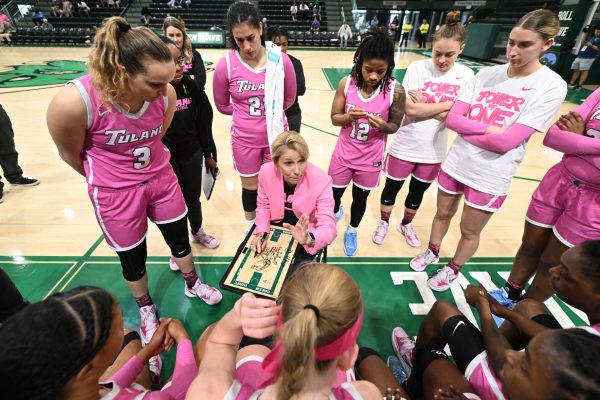Know Your NOLA: Abandoned urban sites reveal a contested New Orleans identity
November 10, 2016
Often referred to as “the most unique city in America,” New Orleans is a place that swells with endless life and celebration. Equally as pervasive, however, are forgotten landscapes where the hardships of Katrina and economic instability have left abandoned structures to rot.
Home to several deserted sites, New Orleans presents a tangled image of a city whose existence has withstood the sands of time through celebration and grit, yet is wracked by reminders of a destructive past and uncertain future.
Lauded by keen photographers and graffiti artists alike, the vacant Six Flags amusement park located off of Michoud Boulevard in eastern New Orleans displays an eerie scene where the devastation of Hurricane Katrina manifests itself in mangled roller coaster remains and moss-covered concession stands.
Where activity has ceased to exist for over a decade, graffiti artists sought to reclaim the park’s right to life through art. Found in the park, previously known as Jazzland, spray-painted messages such as “V for Vendetta,” “NOLA Rising” and “Every Road Leads Somewhere,” reflect a resilient New Orleans community whose hope in the future has paved the way for progress.
Unlike Jazzland, the neglected Charity Hospital, founded in 1736 and located off of Tulane Avenue exhibits a much bleaker image. Once housing 2,680 patients, Charity Hospital boasted its reputation as the country’s second-largest and longest continually running hospital. Providing state-of-the-art facilities for Tulane and Louisiana State University students to conduct medical research, the public hospital was a source of pride for the New Orleans community.
Despite its former significance, much of Charity Hospital’s historical value was swept away in Katrina’s floodwaters. As the water level rose, patients and staff were trapped inside of the hospital for days without air conditioning, power or available supplies to provide medical care — a horrific scene ensued within New Orleans’ former sanctuary.
Without electricity, temperatures climbed to over 100 degrees, while hospital staff resorted to hand-pumping oxygen to keep patients alive and, at the summit of the flood, bodies from the basement morgue floated down the halls. Incredible measures of courage and resolve on behalf of those working at the hospital allowed all patients to evacuate within a week successfully. After a few more weeks, Charity was rendered a functional institution once again.
Nonetheless, Charity’s victory was short-lived. While Federal Emergency Management Agency funds could have been allocated to rebuild the hospital, LSU succeeded in petitioning government actors to funnel money instead into building the University Medical Center, a private facility lacking the same amount of space and, most importantly, the rich history that Charity possessed. Today, the corridors of Charity Hospital remain strewn with equipment, biohazard waste, hypodermic needles and other curiosities, untouched and in a state of reckless abandon.
Involved in a narrative which contrasts that of Charity Hospital’s, the New Orleans World Trade Center has been at the forefront of city-wide debate for its redevelopment as opposed to demolition.
Built in 1967, the WTC served as a symbol of New Orleans’ prized status as an international port city. As of 2016, economic malaise has emptied all of the building’s 33 stories. When whispers of demolition traveled through New Orleans’ business district back in 2013, a campaign to save the structure, “Save WTC NOLA,” gained tremendous momentum. Now, Four Seasons Hotels has plans to reimagine the WTC into a luxury hotel.
Demonstrated through the hopeful graffiti scrawled on an abandoned theme park and vehement protest surrounding the potential demolition of a city landmark, New Orleans is a city that fights for its integrity. Through its discarded landscapes, New Orleans reveals itself as a place of renewal and remembrance, seeking to come back stronger from each blow it takes, but occasionally at the cost of forgetting the past.





















Leave a Comment